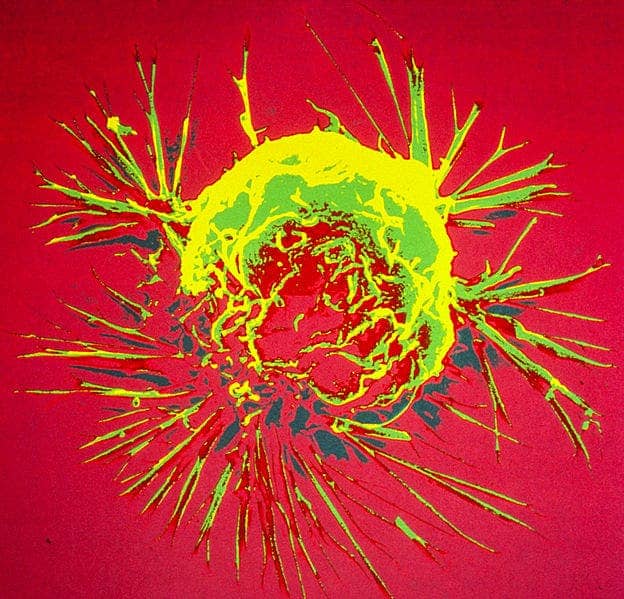Two new papers published in the journal Cell offer the first high-detail maps of the immune system cells which surround tumors.

Image credits National Cancer Institute.
The data could help guide research into new targets for cancer therapies and pinpoint biological markers which can be used to determine the likelihood of patients to respond to particular therapies or when best to start administering them.
What type of cells surround a tumor and the way they respond to it (especially immune system cells which bunch up at its border and fight towards the core) usually makes or breaks immunotherapy aimed at fighting the disease. Recent advances in the ability to characterize those individual cells are now driving a push to catalog and learn more about how the cells impact the progression of tumors.
Act faster, use more data
The first of the papers was published by a team led by Bernd Bodenmiller, a systems biologist at the University of Zurich, Switzerland. The team mapped the body’s immune response for clear cell renal cell carcinoma, a form of kidney cancer. The researchers focused on two types of immune cells — T cells and macrophages. Both of them are involved in either increasing or suppressing the body’s immune response to a tumor by altering the proteins they express.
Bodenmiller’s team worked with samples from 73 patients with kidney cancer and 5 samples from healthy individuals as a control group. They analyzed 3.5 million cells looking at the expression of 29 proteins used to characterize macrophages, and 23 to characterize T cells.
They found that the T cell populations and those of the macrophages were more varied than previously believed. They also note that patients with a particular combination of T cells and macrophages tended to have fast-progressive cancers. All in all, their results shows that the current practice of looking only at one or two major proteins to determine the state of a T cell or macrophage falls very short of giving oncologists the full picture.
The second study was led by oncologist Miriam Merad of the Icahn School of Medicine at Mount Sinai, New York City. His team compiled an atlas of immune cells associated with early-stage lung cancer. By comparing healthy lung tissue and blood with tumor tissue, they found that immune cells in the vicinity of tumors start to alter themselves since the early stages of the disease. This suggests that cancer treatments which target the immune system can be employed from the start, without having to wait for more advanced stages of the disease.
Understanding how our immune systems change in response to cancer would let doctors tailor our interventions against the disease to work in tandem with our bodies — so work like that performed by these two teams is hugely important for patients. The studies themselves are too small to change how we go about treating cancer right now — but they offer a wealth of possibilities. As more researchers double-check the findings and add new data on the foundation these two papers set in the coming years, we’re likely to see cancer treatments becoming more and more personalized.
The first paper “An Immune Atlas of Clear Cell Renal Cell Carcinoma” has been published in the journal Cell. The second paper “Innate Immune Landscape in Early Lung Adenocarcinoma by Paired Single-Cell Analyses” has been published in the journal Cell as well.


